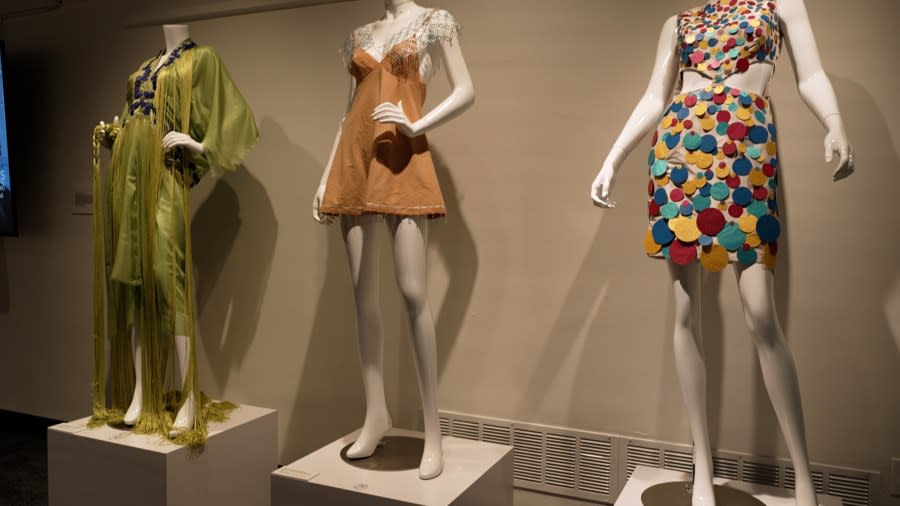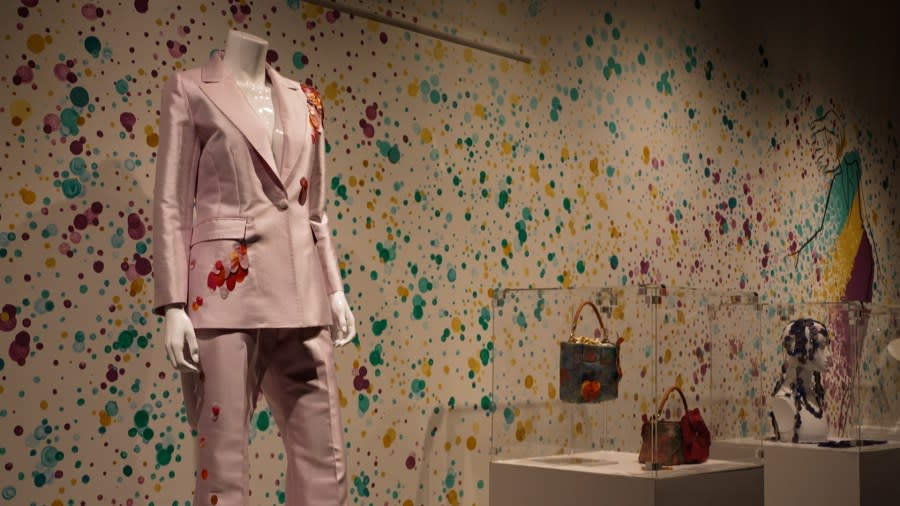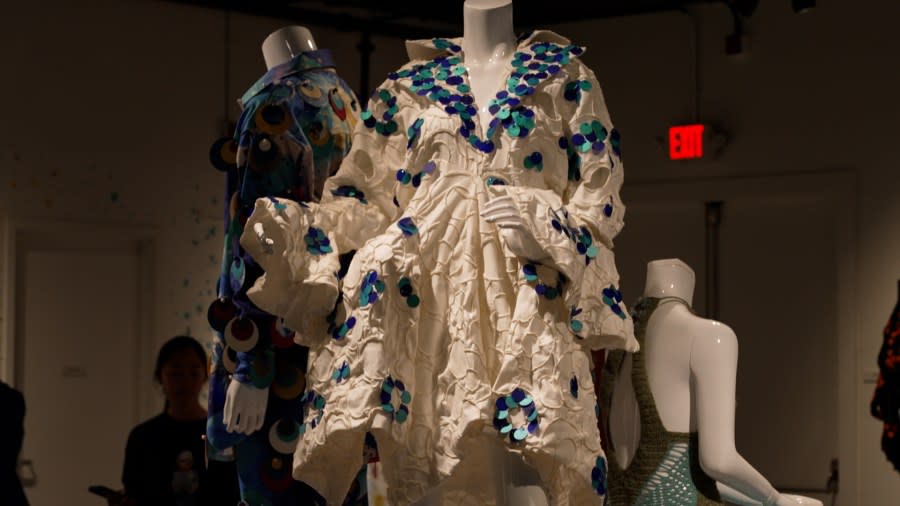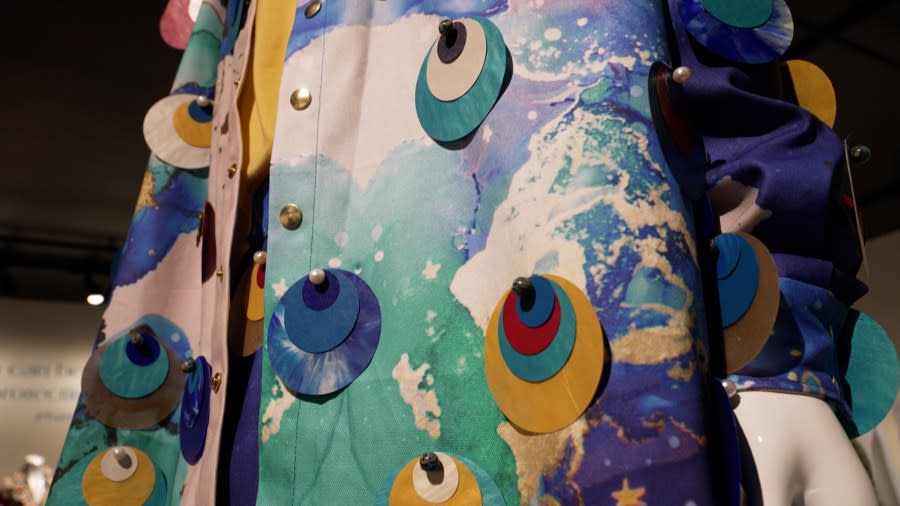Fashion meets science at UT exhibit celebrating sustainable style

- Oops!Something went wrong.Please try again later.
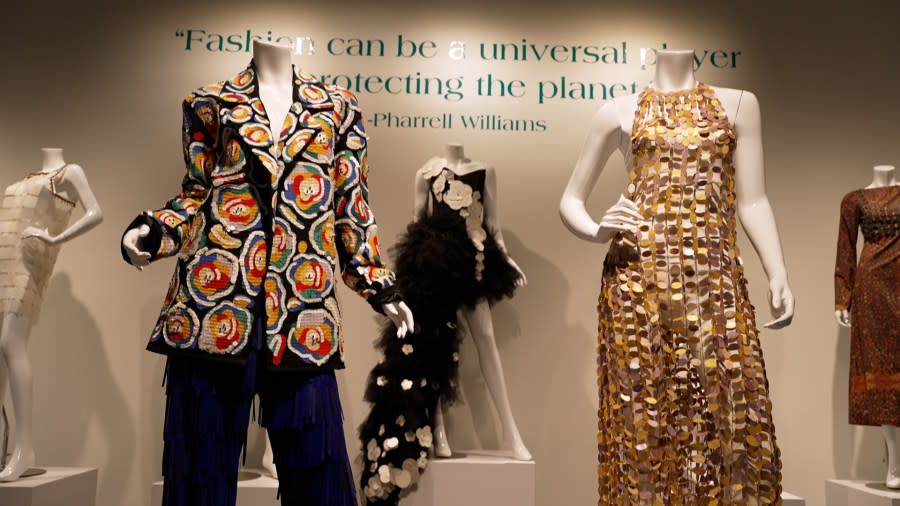
AUSTIN (KXAN) — From lumpy blue sweaters to cerulean military jackets, the fashion industry is interwoven in our lives in a million ways. A new exhibit at the University of Texas aims to highlight this connection and the impact fashion has on our planet.
“The exhibit ‘Particles of Color’ where science meets fashion is our first exhibit on our fourth floor,” said Carolyn Connerat, Director of the Texas Science and Natural History Museum on UT’s campus.
The museum, more than eighty years old, recently completed renovations. The new exhibit is the first since the initial phase of the renovations was completed.
“From men’s fashion to women’s fashion to jewelry to a pair of beautiful cowboy boots,” Connerat said about the ‘Particles of Color’ exhibit.
The exhibit highlights the use of sustainable materials in fashion and the fashion industry’s impact on the planet.
Sustainable sequins?
One of those materials, a new type of sequin developed in the labs at UT by Dr. Jessica Ciarla. “They’re ideally industrial composted and created using nontoxic dyes. So things like spices, food waste, algae,” Ciarla said.
Clouds give way to ‘surreal’ eclipse over Fredericksburg excites those who traveled
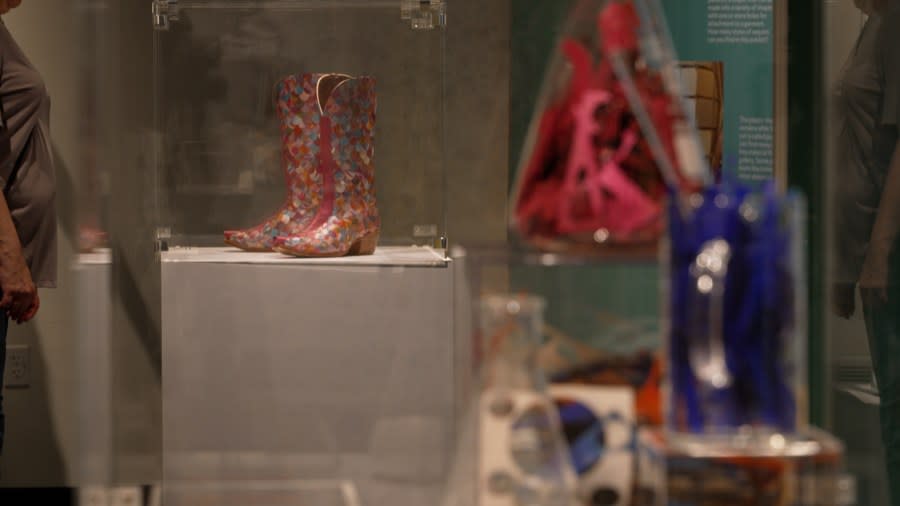
The sequins are made from polylactic acid, a material created from food waste like corn starch. Students took the material, dyed it and cut all the sequins used in the exhibit.
“It was let’s get this research out of the lab. It’s not really helping anyone in this one room in the lab in the corner at UT, let’s inspire others and get inspired ourselves to see how this material can be utilized through their voices through their mediums,” said Ciarla, an associate professor at the Division of Textiles at the University of Texas and director of the exhibit.
Designers and artists, including professionals and students, helped assemble the fashion on display.
University of Texas plans to ‘break the universe’ at upcoming event
“These brooches are jewelry designer Diana Broussard in New York, who does a lot of work for Carolina Herrera,” Ciarla said while pointing at a large display. “This piece is from a Copenhagen-based designer Nikolaj Storm,” she said, pointing at a dress.
Fashion-able fallout
According to the Columbia Climate School, the fashion industry is responsible for 10% of human-driven climate change. The industry uses more energy than the aviation and shipping industries combined.
Some of the outfits were designed by UT students, while others were assembled by professional fashion designers. (Credit: Eric Henrikson/KXAN) Some of the fashion at UTs new exhibit is made entirely of sustainable materials, like the bags in this picture. (Credit: Eric Henrikson/KXAN) Using a new type of sequin, designers are able to create sustainable fashion at the Particles of Color exhibit. (Credit: Eric Henrikson/KXAN) Each of the sequins was made by hand and cut by faculty and students at UT’s Division of Textiles and Apparel. (Credit: Eric Henrikson/KXAN)
“We need to come up with a solution that is more eco-friendly, non-toxic, and can biodegrade at a quick, quicker speed,” Ciarla said about the problem.
The team hopes their exhibit will not only bring attention to this world-altering issue but also the possible solutions that could get us back on track.
For the latest news, weather, sports, and streaming video, head to KXAN Austin.
